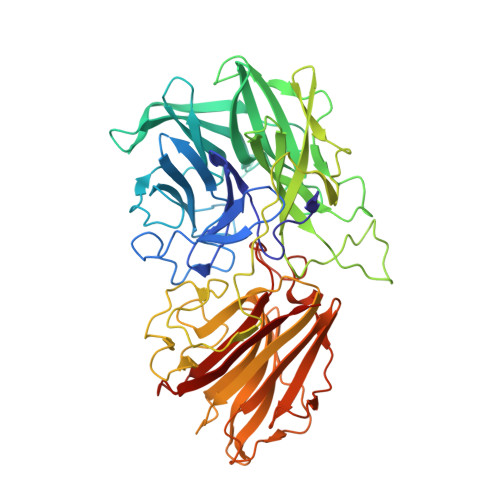Structure-based protein engineering of bacterial beta-xylosidase to increase the production yield of xylobiose from xylose
Hong, S., Kyung, M., Jo, I., Kim, Y.R., Ha, N.C.(2018) Biochem Biophys Res Commun 501: 703-710
- PubMed: 29752942
- DOI: https://doi.org/10.1016/j.bbrc.2018.05.051
- Primary Citation of Related Structures:
5ZQJ, 5ZQS, 5ZQX - PubMed Abstract:
Xylobiose consists of two molecules of xylose and has been highly recognized as a food supplement because it possesses high prebiotic functions. β-xylosidase exhibits enzymatic activity to hydrolyze xylobiose, and the enzyme can also catalyze the reverse reaction in the presence of high concentrations of xylose. Previously, β-xylosidase from Bacillus pumilus IPO (BpXynB), belonging to GH family 43, was employed to produce xylobiose from xylose. To improve the enzymatic efficiency, this study determined the high-resolution structure of BpXynB in a complex with xylobiose and engineered BpXynB based on the structures. The structure of BpXynB deciphered the residues involved in the recognition of the xylobiose. A site-directed mutation at the residue for xylobiose recognition increased the yield of xylobiose by 20% compared to a similar activity of the wild type enzyme. The complex structure of the mutant enzyme and xylobiose provided the structural basis for a higher yield of the engineered protein. This engineered enzyme would enable a higher economic production of xylobiose, and a similar engineering strategy could be applied within the same family of enzymes.
- Research Institute for Agriculture and Life Sciences, Center for Food and Bioconvergence, Center for Food Safety and Toxicology, Department of Agicultural Biotechnology, Seoul National University, Seoul, 08826, Republic of Korea.
Organizational Affiliation:



















